It is easy to dismiss the value of ephemera like picture postcards. All of us have found old collections in the attics of our parents and grandparents. Antique stores often have large collections available for sale. EBay has become a terrific boon for the sellers of postcards, giving them access to a national, and sometimes international, market. We know that looking through them are fun, but do they have real research value? Or are these bits of visual flotsam and jetsam simply fodder for people who obsessively collect anything historical? Perhaps. But historians of human events, society, and architecture are turning to them more and more frequently as an interesting, sometimes important, primary source.
Picture postcards, either photographic or art cards, represent how someone has chosen to show and define a place, and further, how someone else has chosen to define their experience with that place. They show us interpretations of history, as well as history’s record.
Like any photograph, we are seeing an event or a place through the eyes and the mind of a photographer. But then we also frequently see the place through the mind of the person who purchased and sent the card. The picture postcard is really, in so many ways, a precursor to our modern habits of creating selfies and spreading them via social media platforms. Turn old postcards over, and frequently you will find a “I WAS HERE!” note.
So their value lies in the choices made: the choice to take or draw a picture or event, AND the choice to purchase and spread a reaction.
Some Examples of the use of Postcards in Research
In History:
Sometimes the historical value of a card is small; a point of time or interest in some local history. Here’s one from a major educational institution:
In the absence of other photographs, photographic postcards can be used in historic and architectural preservation studies. In this example, there were no written or photographic records in the Harvard University Archives of the original location of the now famous statue of John Harvard, currently situated in Harvard Yard. Only with postcards could the statue’s original location be established, some 500 feet away outside of the Yard.
Sometimes picture postcards can give us visual insight into a local event and its effects. Here’s one recording the effect of the 1938 hurricane on downtown Providence RI:
Or postcards may help bolster a narrative on a national or international event:
So, a picture of White Star’s Titanic:

…and a picture from the Carpathia, which was one of the rescue ships that arrived at the Titanic’s sinking. Here is a picture of some survivors on deck:
Those examples appear to be relatively noncontroversial. But collecting a wealth of cards on a particular era or event can actually help to look deeper into contemporary interpretation of an event. Postcards can be visual facts about how contemporary people and countries were interpreting major events.
So, from the Vietnam War era, we have multiple photographers’ lenses to look through:
A postcard of American and South Vietnamese allies in combat:
…and a picture of North Vietnamese troups:
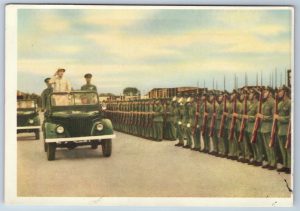
…and finally, unrest at home in 1965 outside the United Nations:
Going one step further in the presentation of contemporary history are the art or comic postcards that people create. Sometimes these were sold as political statements, but they were often simple contemporary interpretation of events or people, reflecting attitudes and biases.
A good published example of how both photographic and drawn postcards can reflect an entire national identity can be found in Tim Semmerling’s book Israeli and Palestinian Postcards: Presentations of National Self.
By searching OneSearch using the subject heading Postcards, any number of books on subjects such as postcards representing colonial attitudes, postcards as political propaganda, etc. can be found.
Researching Social Attitudes
Equally interesting, but often very uncomfortable, are art postcards that inadvertently clearly illustrate social attitudes, perhaps unattractive attitudes. Good examples of this are the depiction of women, or of the Japanese in political postcards of WWII, or the depiction of African Americans (I should note of the picture below, I selected the LEAST offensive card I could find):
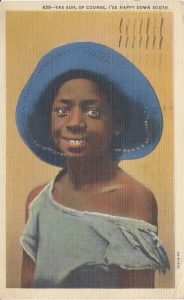
“Yass uh, of course I’se happy down south”
And modern America? We became so enraptured with our modern selves starting in the 1940s. Did you know, for instance, that there was a huge market for postcards of highways and highway rest stops starting around World War 2 and into the 1970s?! “We are modern! We are mobile!”
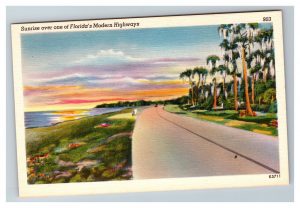
Sunrise Over One of Florida’s Modern Highways
Finding Postcards
The open web, as well as sale sites such as EBay, are excellent places to find examples. Be aware, however, that there may be copyright restrictions on an image’s use. For large national and international collections go to The Digital Library of America. Search the term “postcards”, and you will find more than you could ever want!
Some Local Resources
At Connecticut College, our Linda Lear Special Collections and Archives does not have an enormous collection of postcards, but it does have several hundred depicting Connecticut College, New London, and other Southeastern Connecticut Locations. There is also an online exhibit of some of the New London cards entitled New London Postcards Online: http://lc-digital.conncoll.edu/exhibits/show/new-london-postcards
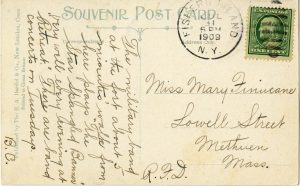
A postcard of New London’s oldest cemetery.
If you are doing local history in any location, do not forget to contact local historical societies, which are usually incredible collections of…well, everything! For instance, the New London County Historical Society also has a collection of approximately 1000 postcards. Their collection features images of both New London, and New London Country.



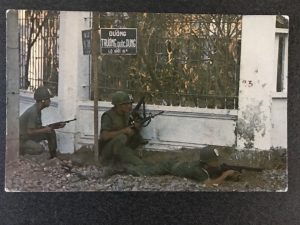
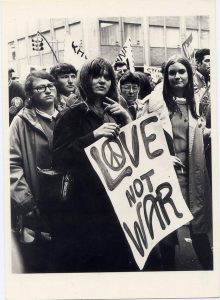
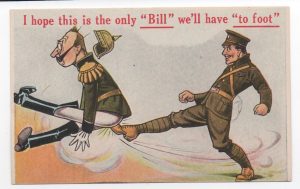
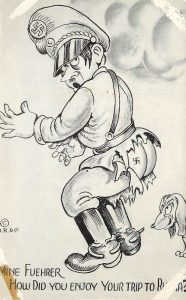
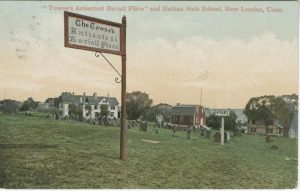
Leave a Reply